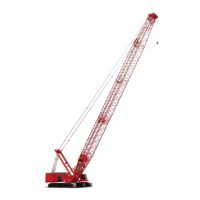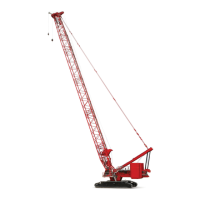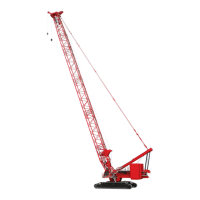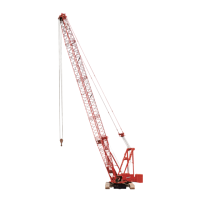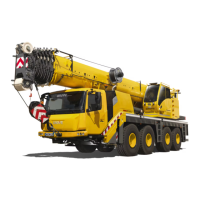HOISTS MLC80A-1/MLC90A-1/MLC100A-1/MLC100-1 SERVICE/MAINTENANCE MANUAL
5-36
Published 10-09-2020, Control # 259-06
SHEAVE, ROLLER, AND DRUM INSPECTION
Perform the following inspections weekly:
• Check the drum clutches and the brakes for proper
adjustment.
• Check all sheaves, rollers, and drums for the following
conditions:
- Unusual noises
- Freedom of movement—Must turn freely by hand.
Wire rope may need to be loosened to perform this
inspection.
- Wobble—Must turn true with very little side-to-side
or up-and-down play.
- Signs of rust (indicating that water may have
entered the bearing).
- Grease leaks (indicating a faulty seal or water in the
grease).
The above problems indicate bearing damage. If found,
the corresponding sheave, roller, or drum should be
disassembled for further inspection. New bearings
should be installed.
For sheaves not equipped with grease fittings, be sure to
pack the new bearings with grease at assembly.
• For steel sheaves, check the depth, width, and contour
of each sheave using a groove gauge (see Figure 5-25
).
Replace the sheaves that have oversized or undersized
grooves.
• Replace any grooved drums that allow one wrap of the
wire rope to contact the next wrap as the rope spools
onto the drum.
• Inspect the sheaves to verify they do not contact another
sheave or structural plate work. There should be uniform
clearance between sheaves in a cluster. Repair or
replace worn or damaged sheaves.
• Remachine or replace steel sheaves, drums, or rollers
that have been corrugated by the wire rope’s print (see
Figure 5-26
).
NOTE: Many current production sheaves are not equipped
with grease fittings, but are packed with grease at
assembly. Repack the bearings of these sheaves
with CraneLUBE EP #2 grease when the sheaves
are overhauled.
Due to application and design variations, it is not
possible to give specific grease repacking intervals
or the life expectancy of the components.
• Make sure the sheaves, drums, and rollers are properly
lubricated according to the instructions in the lubrication
guide provided with this manual.
NOTE: For some sheaves, the seals are an integral part of
the bearing. Therefore, if a seal is damaged during
repacking, the complete bearing may need to be
replaced.
Observe the groove to see if the contour of the gauge
matches
the contour at the bottom of the sheave groove.
Proper fitting sheave groove should support
the
wire rope or 135–150° of rope circumference.
Groove Too Small
Groove Too Large
FIGURE 5-25
“Corrugated” steel sheave,
roller, or drum will cause
the
wire rope to wear rapidly.
FIGURE 5-26

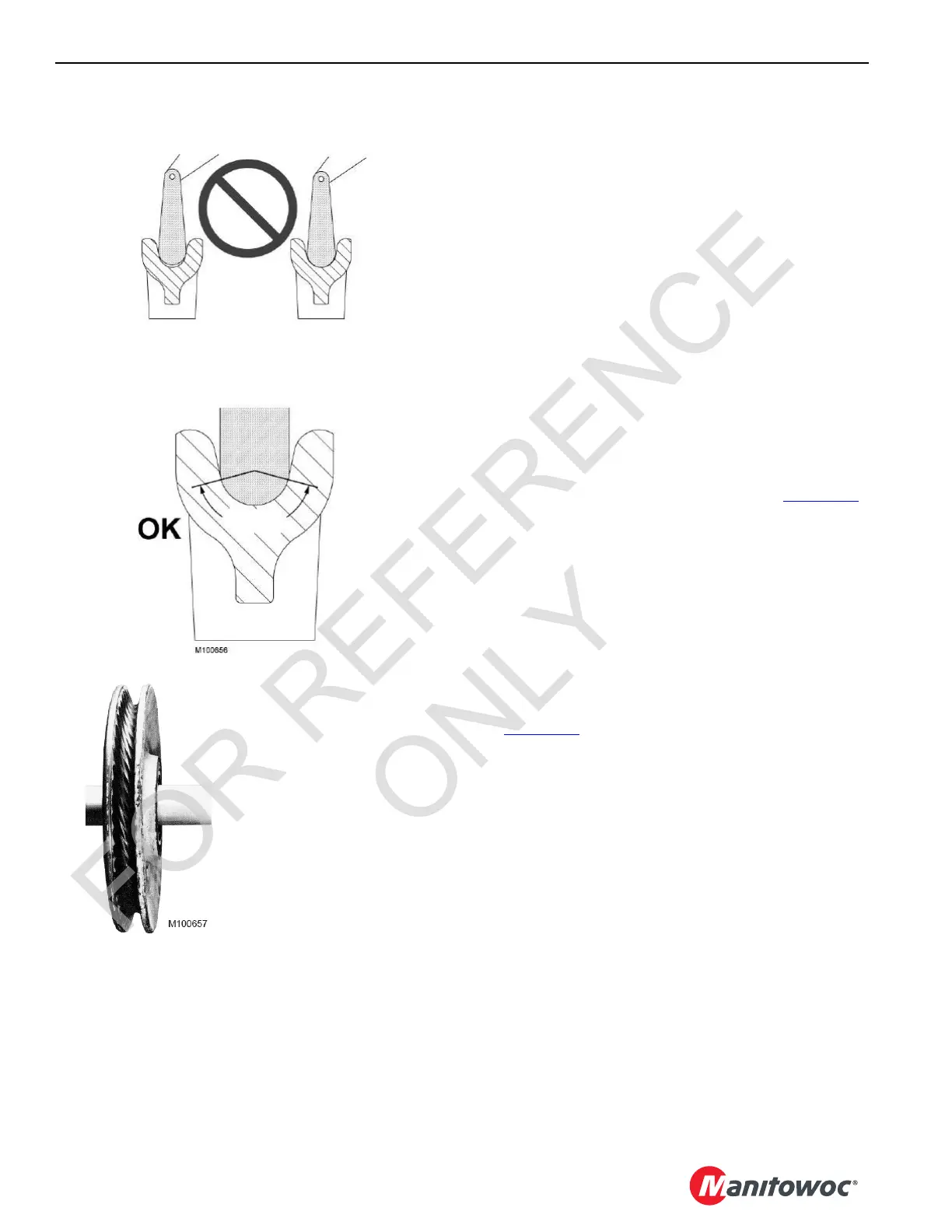